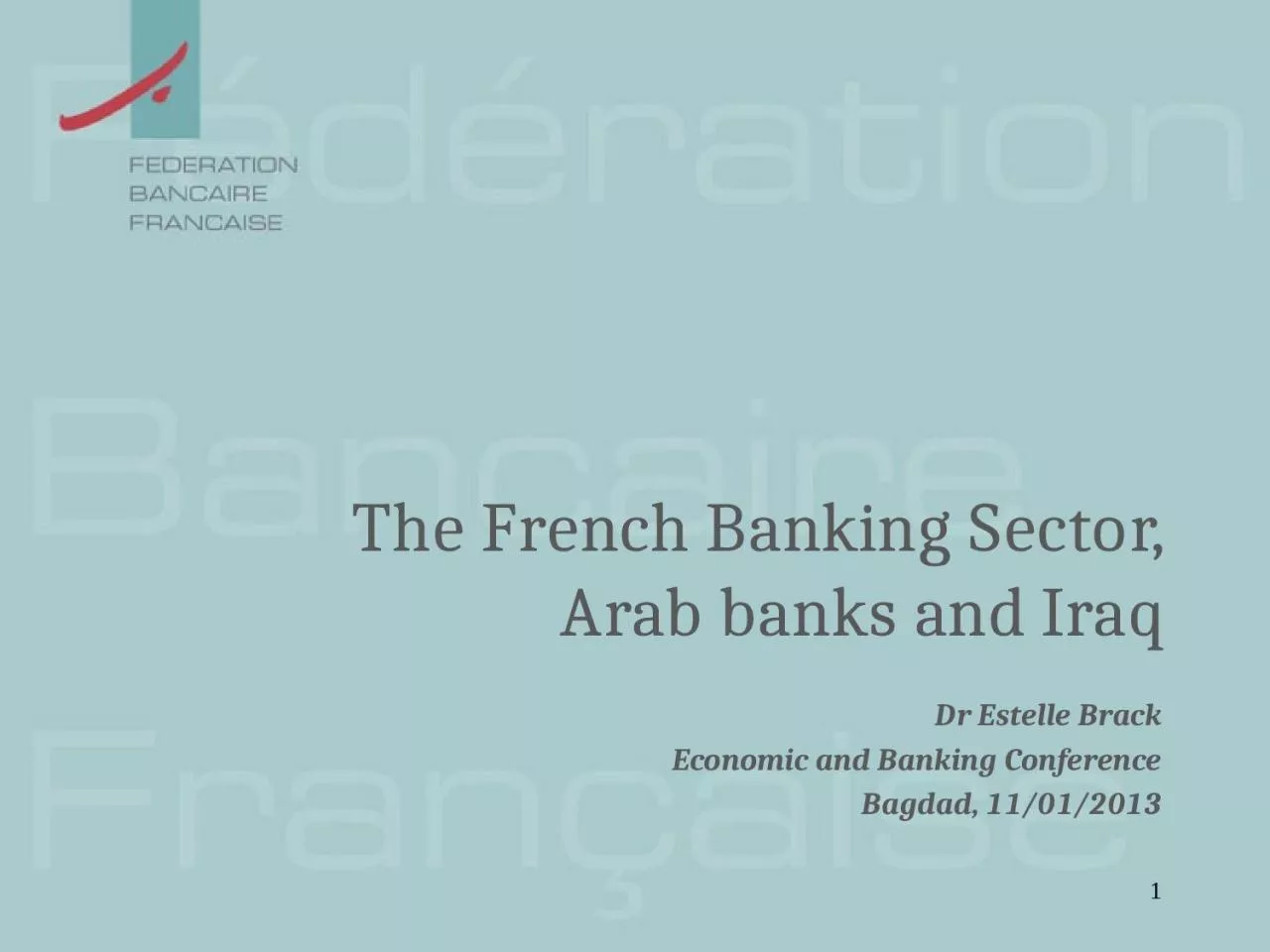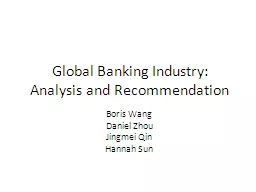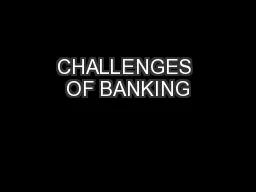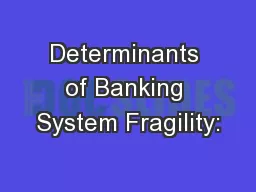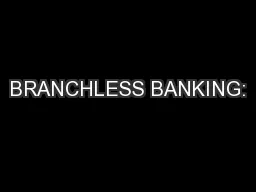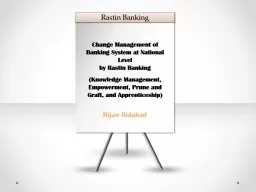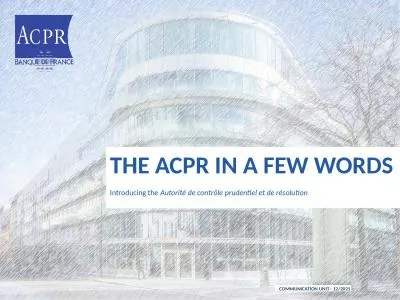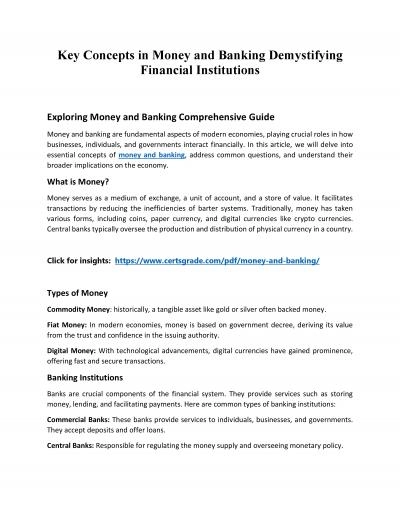PPT-1 The French Banking Sector
Author : elyana | Published Date : 2023-11-04
Arab banks and Iraq Dr Estelle Brack Economic and Banking Conference Bagdad 11012013 According to the IMF Iraqs reconstruction requires not only the rebuilding
Presentation Embed Code
Download Presentation
Download Presentation The PPT/PDF document "1 The French Banking Sector" is the property of its rightful owner. Permission is granted to download and print the materials on this website for personal, non-commercial use only, and to display it on your personal computer provided you do not modify the materials and that you retain all copyright notices contained in the materials. By downloading content from our website, you accept the terms of this agreement.
1 The French Banking Sector: Transcript
Download Rules Of Document
"1 The French Banking Sector"The content belongs to its owner. You may download and print it for personal use, without modification, and keep all copyright notices. By downloading, you agree to these terms.
Related Documents

